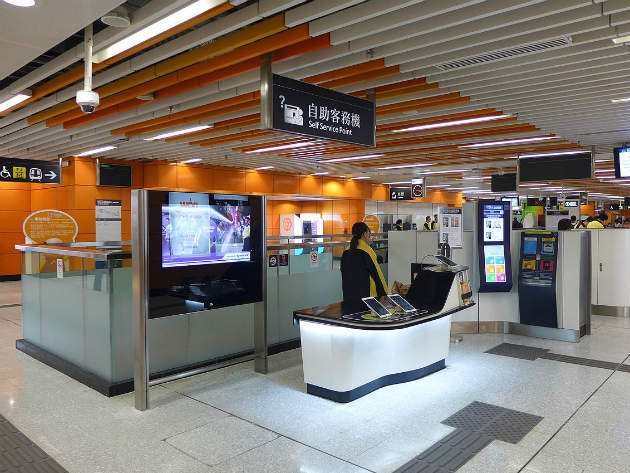
In December 2016, Hong Kong welcomed the addition of the South Island Line, a driverless, fully automatic metro line serving the south-western coast of Hong Kong Island, between Shek Tong Tsui and Wong Chuk Hang.
The 7km-long extension of the Hong Kong MTR metro system, which now serves 350,000 people, came in response to calls from the Southern District residents for improved and alternative transport service. The area’s commuters have long struggled with inadequate public transportation, which, over the years, restricted access to employment in the former industrial areas of Wong Chuk Hang.

Discover B2B Marketing That Performs
Combine business intelligence and editorial excellence to reach engaged professionals across 36 leading media platforms.
According to the project’s developers, the new line will help promote tourism and economic activity in the Southern District.
Global design and engineering consultancy Atkins was in charge of a sizeable part of the project, such as the design of two elevated stations at Ocean Park and Wong Chuk Hang, 1.9km of a new elevated viaduct, a new 247m bridge spanning the Aberdeen Channel Bridge, noise barriers, widening of a major open nullah for drainage, slope works, complex utility diversions and other associated works.
Atkins director for transport in Asia Pacific John Blackwood described the South Island Line as a “particularly challenging project”, partly due to the difficulty of carrying out construction works in one of highest density cities on earth.
A technically advanced driverless system
South Island Line (SIL) stretches from Admiralty to South Horizons through tunnel and viaduct sections to serve new stations at Ocean Park, Wong Chuk Hang, Lei Tung and South Horizons.

US Tariffs are shifting - will you react or anticipate?
Don’t let policy changes catch you off guard. Stay proactive with real-time data and expert analysis.
By GlobalDataProject developers chose a medium-capacity system, instead of the heavy rails initially proposed for SIL, due to the gradients and tight horizontal curves along the corridor, as well as to minimise the impact of construction on the busy community.
The ten new trains use fully automatic operation (FAO), an advanced train operation technology used in dozens of cities around the world, including the railway systems of Paris, Tokyo, Singapore and Taipei. The technology offers an advantage during emergencies, when train service can be resumed via a reset of the train, from the operations control centre.
The trains have also been fitted with wheel dampers to minimise the noise impact on the community, while noise barriers were installed along the viaduct section.
“Clearances to adjacent developments were maximised and the railway viaduct level optimised as far as possible to minimise visual impacts,” Blackwood says.
“Noise barriers were provided along much of the alignment and integrated with overhead line supports to minimise the height of the structure. These barriers were architecturally treated to minimise visual impacts.”
The MTR Corporation introduced landscaped walkways along the corridor by planting trees and shrubs next to the railway viaduct along Wong Chuk Hang Road, Ocean Park Road, Heung Yup Road, as well as the new pedestrian link connecting Wong Chuk Hang Station and Kwun Hoi Path.
Not an easy feat
Over the five years that it took to deliver the new extension, developers ran into ‘considerable challenges’, partly due to the difficulty of acquiring land on the densely populated streets of Hong Kong.
“Public consultation and stakeholder engagement are key parts of design development for major infrastructure projects in Hong Kong,” Blackwood says. “It is becoming progressively more difficult to get approvals in place for above ground railways in Hong Kong and required full consideration of both visual and noise impacts amongst other issues.”
Over two months, mid-last year, South China Morning Post reported that land prices surged in Hong Kong. In February, four parcels of land were put up for tender, the largest number of plots for sale in a single month this financial year. One site sold for HK$7.794bn ($10bn).
Another difficulty was carrying out underpinning works in the vicinity of the operating railway, while workers struggled with access constraints and a tight working space.
“Extensive construction of sections of viaduct and Wong Chuk Hang station over an existing drainage nullah [was a particular challenge],” says Blackwood. “The flow capacity of the nullah had to be maintained and consequent constraints of essentially only being able to work in the nullah during the ‘dry season’ were recognised in the design solutions and implementation programme developed.”
Reduced steelwork, structural envelope and maintenance requirement for the viaduct led to significant cost and time savings during the construction.
Despite running into minor problems due to station flooding just one day after opening in December, the new metro has been hailed as a success.
“The real measure of success of the project has been the public reaction once the railway has been opened,” says Blackwood.
“It has changed how people travel to and from the Southern District of Hong Kong Island and given residents much more time for themselves rather than wasting it stuck in the frequent traffic congestion that occurred before.”





